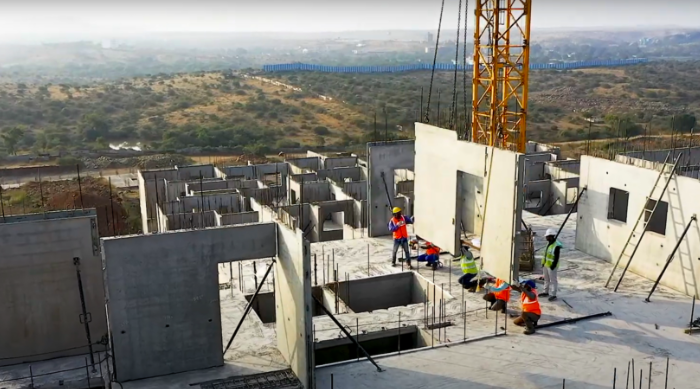
With rising material costs and growing environmental concerns, builders are shifting toward more efficient and eco-conscious methods. One area that plays a major role in supporting this shift is precast panel detailing. This process, though often overlooked, has a significant impact on reducing waste and improving sustainability across a project’s lifecycle.
From manufacturing to on-site installation, precast detailing ensures precision and efficiency. Let’s explore how this detailed planning approach contributes to a more sustainable construction process.
Reducing Material Waste through Accuracy
Precast panel detailing is all about getting the design right before anything is built. Each panel is carefully planned, including its dimensions, materials, reinforcements, and connection points. This level of accuracy significantly reduces material waste.
Rather than overestimating the amount of concrete or steel required, a properly developed precast concrete detail ensures only what is necessary is used. Mistakes and rework are also minimised, which leads to further savings in resources and time.
Cleaner and More Controlled Manufacturing
Unlike traditional on-site construction, precast elements are fabricated in a controlled environment. This offers better oversight, quality control, and reduced exposure to weather conditions — all of which contribute to waste reduction.
Precast detailing services help manufacturers plan production efficiently. They allow formwork and moulds to be reused, and ensure that panels are cast correctly the first time. This reduces the chances of defective components and improves consistency across the board.
Streamlined Site Work and Installation
Precast detailing also improves sustainability during the on-site construction phase. When panels arrive at the site, they are ready to be installed — no cutting, trimming, or adjustments needed. This translates to cleaner sites with less packaging waste, debris, and offcuts.
Thanks to accurate instructions from a skilled precast detailer, crane operations are planned in advance, panel alignment is predictable, and delays are avoided. This reduces not only physical waste but also time and energy used in construction activities.
Modular Construction and Reusability
Modular construction is a growing trend in sustainable building, and precast panel detailing is a key enabler. Detailed and standardised panels can be disassembled and reused in future projects, extending their lifecycle and preventing them from ending up in landfills.
A good precast concrete detail takes into account how the panel can be removed or repositioned later. By planning for reuse from the start, construction teams can support circular economy practices and reduce their environmental footprint.
Smarter Transportation Planning
With detailed drawings in hand, logistics teams can better plan how panels are loaded, stacked, and transported to the site. This reduces the number of trips needed, leading to lower fuel consumption and emissions.
Precast detailing also helps reduce the risk of damage during transportation. Fewer damaged panels mean fewer replacements and less material wastage — all thanks to proper detailing in the early stages.
Collaboration with Structural Engineering Services
When precast detailing services work closely with structural engineering services, the result is not only a safe and structurally sound building, but also a sustainable one. Together, these services ensure the most efficient use of materials by optimising reinforcement layouts and load distribution.
Structural engineers help ensure that each precast concrete detail is practical and adheres to safety standards. Meanwhile, the precast detailer focuses on how those components are manufactured and assembled efficiently. This collaboration leads to less overdesign and fewer unnecessary materials used.
Enhanced Energy Performance
In addition to reducing construction waste, good detailing can also improve the building’s long-term energy performance. Precast panels designed with proper insulation and minimal air gaps help improve thermal efficiency.
Precast panel detailing ensures joints, seals, and alignments are accurate, which prevents thermal bridging and air leakage. This reduces the need for heating and cooling, resulting in lower energy consumption throughout the building’s lifetime.
Supporting Green Certifications
Many construction projects today aim for sustainability certifications like LEED or IGBC. Precast detailing contributes directly to these goals by reducing construction waste, encouraging the use of recycled materials, and improving site conditions.
By using qualified precast detailing services, developers can track and document their waste reduction efforts — a key requirement for many green building rating systems.
Final Thoughts
Precast panel detailing plays a vital role in making construction more sustainable and efficient. From reducing raw material usage to enabling better energy performance, it provides benefits that go well beyond the drawing board. Through precise detailing, project teams can optimise the dimensions, reinforcement layouts, and connection systems of precast panels to ensure minimal waste and maximum strength. This not only conserves resources but also reduces on-site errors and rework, saving time, energy, and money.
Precast detailing also allows for better planning and coordination among trades, leading to fewer delays and smoother project execution. Additionally, well-detailed precast elements can enhance a building’s thermal performance, contributing to lower energy consumption and improved occupant comfort.
With the combined support of experienced precast detailers and reliable structural engineering services, construction firms can embrace greener practices, minimise waste, and build more responsibly. Investing in high-quality detailing at the design stage is a proactive step toward achieving long-term sustainability goals, ensuring that buildings are not only structurally sound but environmentally conscious as well.




